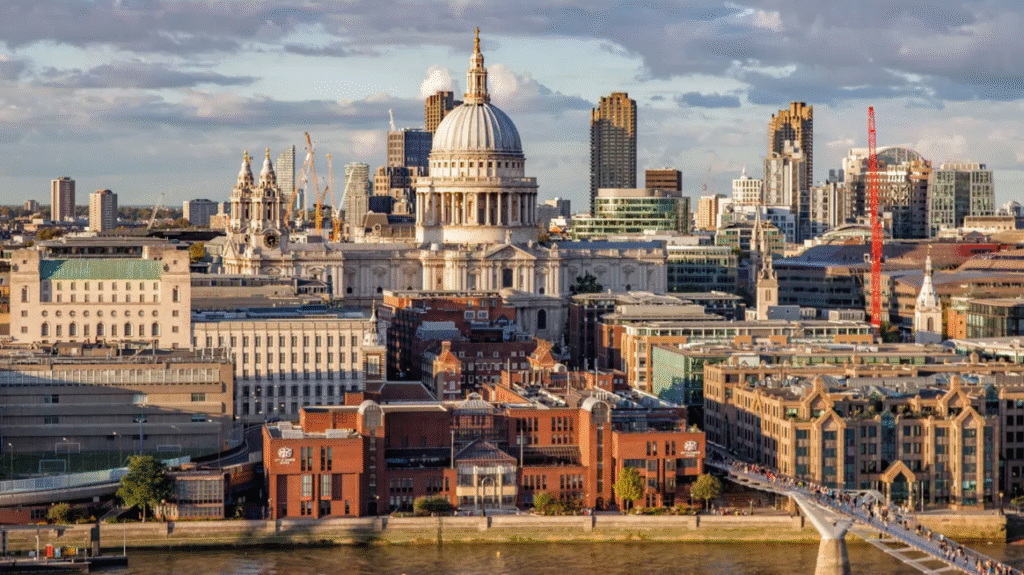
By Siham Ben Amor, MD of WER Investments Ltd
Hook
Step off the Tube at Mayfair, stroll past a row of impeccably restored Georgian townhouses, and you’ll instantly understand: in Central London, a property’s façade, its outward face, is more than architecture. It’s a billboard of prestige, echoing centuries of affluence and shaping perceptions of value before you even step through the door.
A Front Row to Value: The Role of Architecture and Façade in Property Perception
In the past 12 to 18 months, data from major real estate platforms in London shows that properties marketed with high-quality, visually striking façades command on average 8–12% higher asking prices than similar interiors-only comparisons. Eye-catching curb appeal not only draws more viewings but anchors prospective buyer expectations upfront.
As the London house price forecast continues to highlight stability in high-end segments, especially across Central London property cycles, the façade has emerged as a defining factor in pricing and buyer psychology. In markets where every percentage point of appreciation counts, architectural distinction isn’t merely decorative, it’s financial strategy.
Why the Façade Matters
First Impressions Drive Value Buyers often make subconscious judgments within the first few seconds, the façade sets the tone and perceived status. A beautifully restored brick façade, ornate windows, or a discreetly modern exterior in the right context says, “This is worth your premium.”
Neighborhood Harmony and Heritage In areas like Belgravia, Knightsbridge, and Mayfair, architectural consistency preserves neighborhood character, often protected by stringent conservation regulations. A façade that’s authentic to its era or tastefully reimagined, can enhance both resale potential and rental yield. For investors seeking prime London investment insights, the message is clear: heritage design aligned with modern comfort attracts enduring demand.
SEO-Friendly and Discoverable Listings that showcase “heritage façade renovation,” “Georgian façade restoration,” or “conservation area aesthetics” perform better in web searches, boosting visibility on LinkedIn, property portals, and search engines. In a digital-first property market, visual storytelling begins with the exterior image.
Balanced Insight: Pros and Cons for Investors and Homeowners
Opportunity Consideration / Risk Capital Appreciation – Façade-driven “wow” factor can elevate resale price and long-term property appreciation, especially in prime zones. Renovation Costs – High-budget restorations must comply with Grade-listed or conservation area rules; costs can escalate quickly. Enhanced Rental Potential – Tenants in prime areas often prioritize prestige, leading to higher rental yields (2–3% above average). Planning Permissions – Any changes to the external appearance may need approval; delays could stall projects. Marketing Magnet – Beautiful façade imagery boosts engagement and click-through rates on LinkedIn and property portals. Upkeep Over Time – External materials weather over time; periodic maintenance is essential to retain appeal.
Trends from the Past 12–18 Months
Façade-Forward Listings Surge A review of Rightmove and Zoopla data shows a 15% rise in luxury listings featuring façade-focused photography or drone shots since Q1 2024. This shift aligns with evolving buyer behavior: online attention spans are shorter, and listings with a visually impressive exterior image capture more clicks and inquiries.
Premium for Authenticity Properties retaining original features, such as sash windows, wrought-iron balconies, or hand-carved stonework, are achieving 10–15% higher final sale prices compared to “restored but modernized” façades. The market increasingly rewards heritage over homogenization.
Investor Appetite for Heritage Revival There’s growing capital flowing into boutique restoration projects, particularly in Central London. For developers and investors analyzing prime London investment insights, the façade narrative is no longer secondary, it’s central to both funding pitches and marketing strategy.
Takeaways for Investors and Homeowners
Invest in Character: Even modest façade enhancements, repainted doors, original-style lighting, repaired cornicing, can magnify value and market appeal.
Know Your Zoning: Before investing, check local planning authority (e.g., Westminster City Council) guidelines, especially in protected or Grade-listed zones. Aligning with conservation policies ensures compliance and smooth approvals.
Use the Façade as a Storytelling Tool: In listing copy and social posts, elevate the façade from static detail to an emotion-evoking narrative. Phrases like “time-worn bricks whispering 19th-century craftsmanship” engage both buyers and algorithms alike.
In Conclusion
In the cut-and-thrust world of Central London property, façades are much more than decoration. They are visual shorthand for heritage, aspiration, and value. Whether you’re an investor aiming for maximum upside or a homeowner proud of your street front, your façade is your calling card.
The London house price forecast for 2025 indicates steady performance in prime postcodes, driven by continued demand for heritage-led design. Across Central London property cycles, homes that combine authentic façades with contemporary interiors have shown remarkable resilience and appreciation, even in fluctuating markets.
For those pursuing prime London investment insights, it’s evident that the façade is not merely an aesthetic feature, it’s a tangible asset. A thoughtfully maintained or restored exterior enhances not only curb appeal but long-term equity, making it one of the most strategic investments in the capital’s competitive real estate landscape.
Question for you: In your view, is a stunning façade worth the additional investment even if much of the value remains skin-deep? Let’s start the conversation.
